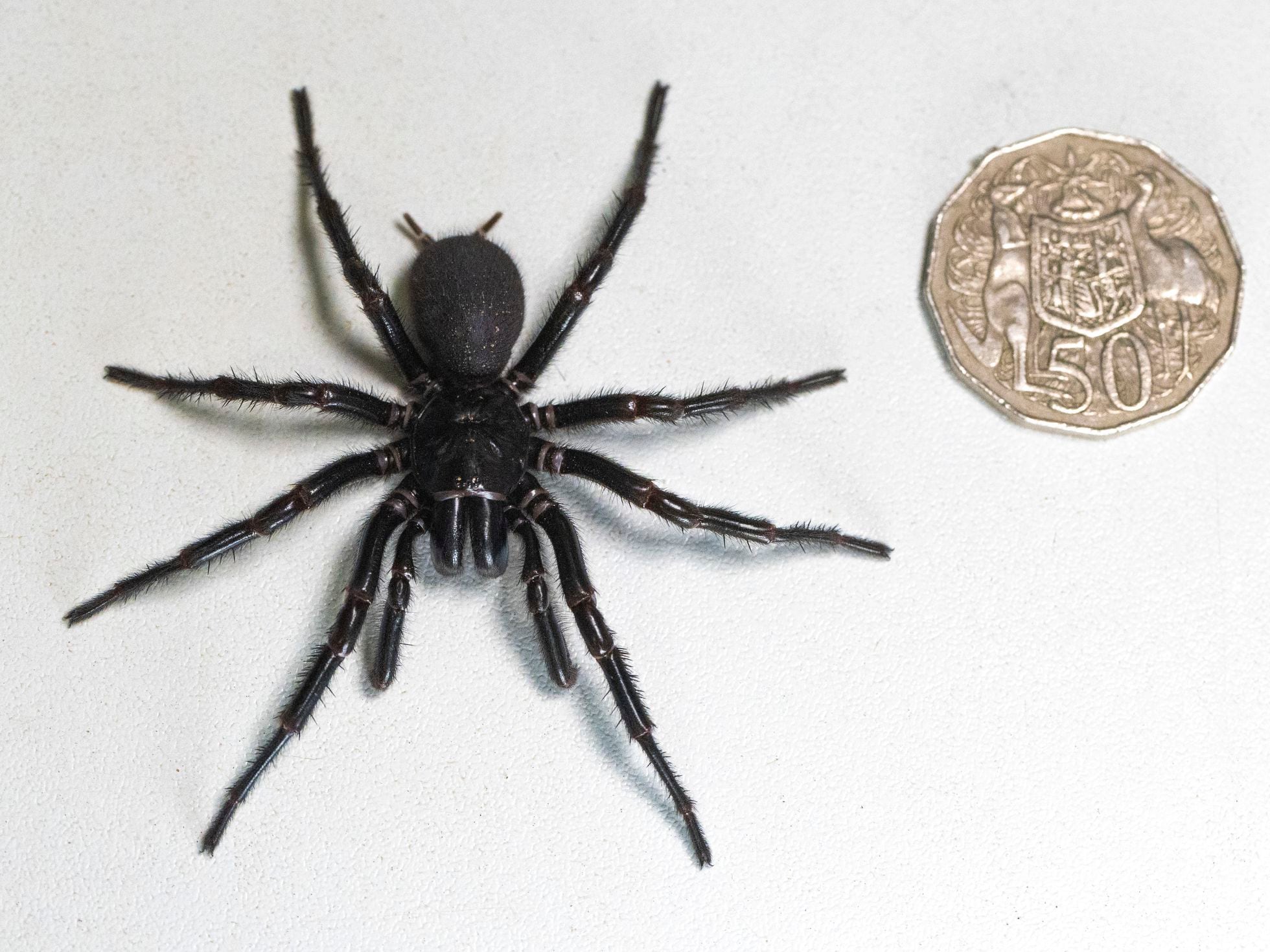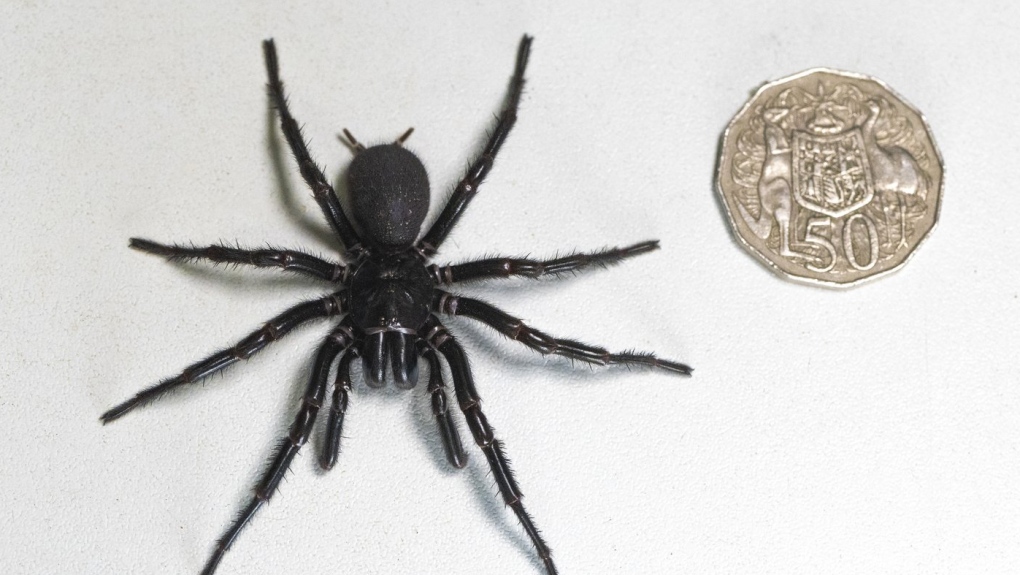
In a remarkable find on the Central Coast, about 50 miles north of Sydney, a massive funnel-web spider has been discovered, making headlines as the largest male specimen ever documented in Australia. This formidable arachnid, appropriately named “Hercules,” has captured the attention of both spider enthusiasts and researchers due to its impressive size and venomous nature. The unearthing of this colossal spider has sparked curiosity and fascination, as people eagerly delve into studying and understanding this extraordinary creature. With its newfound fame, Hercules has become a symbol of the incredible diversity and wonders of the natural world, leaving us in awe of the remarkable creatures that inhabit our planet.
Unveiling Hercules: The Largest Male Funnel-Web Spider in Australia

In a surprising revelation on the Central Coast, located about 50 miles north of Sydney, the Australian Reptile Park has recently made a remarkable discovery. They uncovered an enormous Sydney funnel-web spider, which they have aptly named “Hercules.” Initially, the spider was handed over to a local hospital, but it was later retrieved by experts from the nearby park.
What makes this finding even more impressive is the size of Hercules. Measuring an astonishing 7.9cm (3.1 inches) from foot to foot, he has now earned the title of the largest male funnel-web spider ever recorded in Australia. This surpasses the previous record-holder, a male funnel-web spider named “Colossus,” which was identified in 2018.
The Sydney funnel-web spider is notorious for its potent venom, making it one of the most deadly spiders in the world. With the discovery of Hercules, researchers now have a unique opportunity to delve deeper into the biology, behavior, and venom properties of this formidable species. This finding could potentially provide valuable insights into the spider’s venom and contribute to the development of antivenom and other medical treatments.
Global Attention and Implications
:max_bytes(150000):strip_icc():focal(818x201:820x203)/Poisonous-Spider-Sets-Record-for-Largest-Specimen-Collected-By-the-Public-in-Australia-010524-42a14e23f99a4327b9e2821c99d9f1ef.jpg)
The discovery of Hercules, the giant spider, has not only fascinated local communities but has also attracted global interest. This finding holds great importance beyond mere scientific curiosity, as it has implications for research, conservation, and public safety.
Experts from the Australian Reptile Park, specializing in spiders, highlight the significance of public contributions to their research. They commend the local community for actively reporting and participating in the study of these fascinating creatures.
The involvement of the community in this research is crucial. By reporting sightings and sharing their knowledge, the public plays a vital role in expanding our understanding of these intriguing spiders. Their contributions help scientists gather valuable data, leading to further insights into the behavior, habitat, and conservation needs of these creatures.
Furthermore, the international attention generated by the discovery of Hercules highlights the importance of spider research on a global scale. This newfound interest can potentially lead to increased funding and support for further studies, ultimately benefiting both scientific knowledge and conservation efforts.
Additionally, the discovery of Hercules has implications for public safety. Understanding the behavior and habitat of these spiders can help educate the public about potential risks and appropriate precautions to take. This knowledge can prevent unnecessary encounters and promote coexistence between humans and these unique creatures.
Overall, the news of Hercules has sparked excitement and interest not only within local communities but also across the globe. The contributions of the community to spider research are invaluable, and the implications of this finding extend far beyond scientific curiosity, impacting research, conservation, and public safety.
Enhancing Our Understanding of Australia’s Wildlife

The recent discovery of Hercules, a record-breaking funnel-web spider, has opened up a new chapter in the ongoing exploration of Australia’s diverse wildlife. This finding has sparked great interest among researchers, who are now delving into the intricacies of this remarkable creature. By studying Hercules, scientists hope to gain a deeper understanding of funnel-web spiders and contribute valuable knowledge to the field of arachnology. This research not only sheds light on the unique characteristics and behaviors of these spiders, but also has broader implications for our understanding of Australia’s rich biodiversity. Ultimately, the study of Hercules will contribute to our overall knowledge of wildlife and help us better appreciate the wonders of the natural world.
Hercules: A Remarkable Specimen

The formidable Sydney funnel-web spider has unveiled a remarkable specimen named “Hercules,” establishing itself as the largest male funnel-web spider ever identified in Australia. Discovered on the Central Coast, approximately 50 miles north of Sydney, Hercules initially found its way to a local hospital before being retrieved by experts from the Australian Reptile Park.
A Record-Breaking Size
Measuring an impressive 7.9cm (3.1 inches) from foot to foot, Hercules eclipses the previous record set by a male funnel-web spider named “Colossus” in 2018. This revelation not only captures the attention of local communities but also resonates globally, emphasizing the significance of this arachnid discovery.
The Deadly Venom
The Sydney funnel-web spider is renowned for its potent venom, contributing to its classification as one of the most dangerous spiders on the planet. Hercules’ emergence as a record-breaking specimen provides researchers with a unique opportunity to deepen their understanding of the species’ characteristics, behavior, and venom properties.
Community Involvement and Conservation
Spider experts from the Australian Reptile Park commend the local community for their role in reporting and contributing to the study of these fascinating creatures. Beyond its scientific implications, Hercules’ discovery underscores the importance of ongoing research, conservation efforts, and public awareness to ensure the coexistence and understanding of these remarkable arachnids in their natural habitat.
